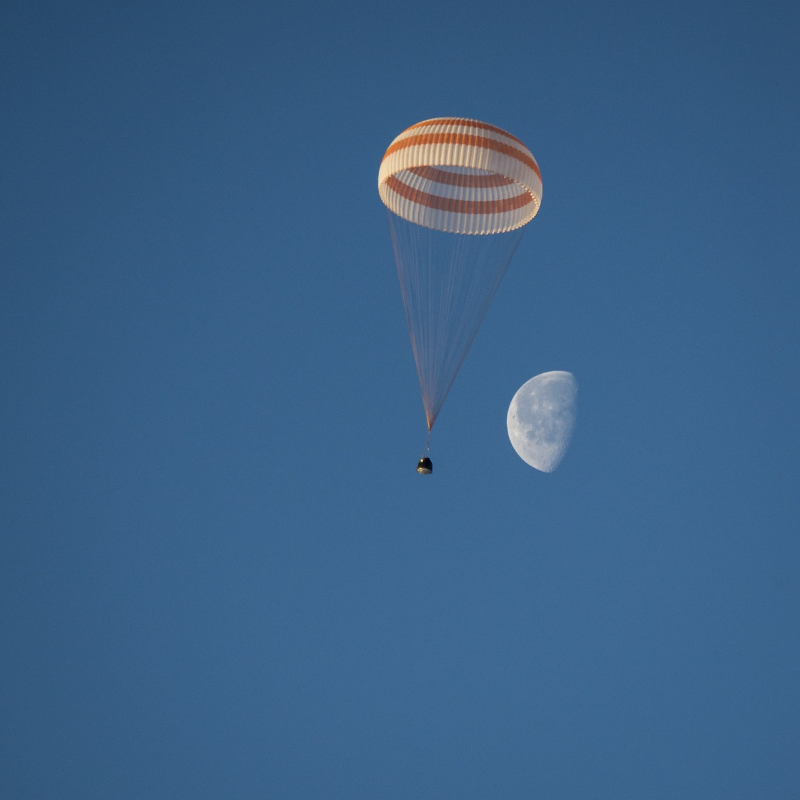Free Fall with Drag
Soyuz Return Module

Let's take a look at the physics of free fall with drag. While gravitation is not constant at altitudes from which the Soyuz descends, we will use the assumption of constant gravitation for now. I will use downward as the +x direction. We will assume linear (one dimensional) motion. If we just write down the forces and put them into Newton's second law, we get where k stands for all the constants in the drag equation, or . As before, we replace the acceleration with the derivative of velocity with respect to time and we get the differential equation of motion:
Notice that the drag term contains a vector times its magnitude rather than a magnitude squared term This form allows the sign of the air drag to switch if the velocity switches direction, which is accounted for by a sign change. For instance, if the positive x-axis is directed upward, then when an object is falling downward it must be attributed a negative value of
While we will be solving this equation using numerical methods, I should note that this 1D drag problem has a known analytic solution which takes some work to arrive at, but when we try to do 2D or 3D motion with drag, there is no known solution to the equations. In all instances we will simply rely on GeoGebra's numerical algorithms for our solution.
Numerical Solution
As with numerical solution of free fall without drag, we need to write the second order differential equation as a coupled set of linear ones. The first one really just defines velocity for the program. The second one matches the equation above. Assuming positive is downward in this case, the equations will look like this:
The actual code entered into GeoGebra for the second equation would have to look like:
v_x'(t,r_x,v_x)=g-k/m*abs(v_x)*v_x. Once the equations are entered, we need to tell GeoGebra to solve the set of N=2 differential equations like before using the code: NSolveODE[{r_x',v_x'},0,{0,0},10], which will solve for the first 10 seconds of falling with an initial position and velocity of zero.